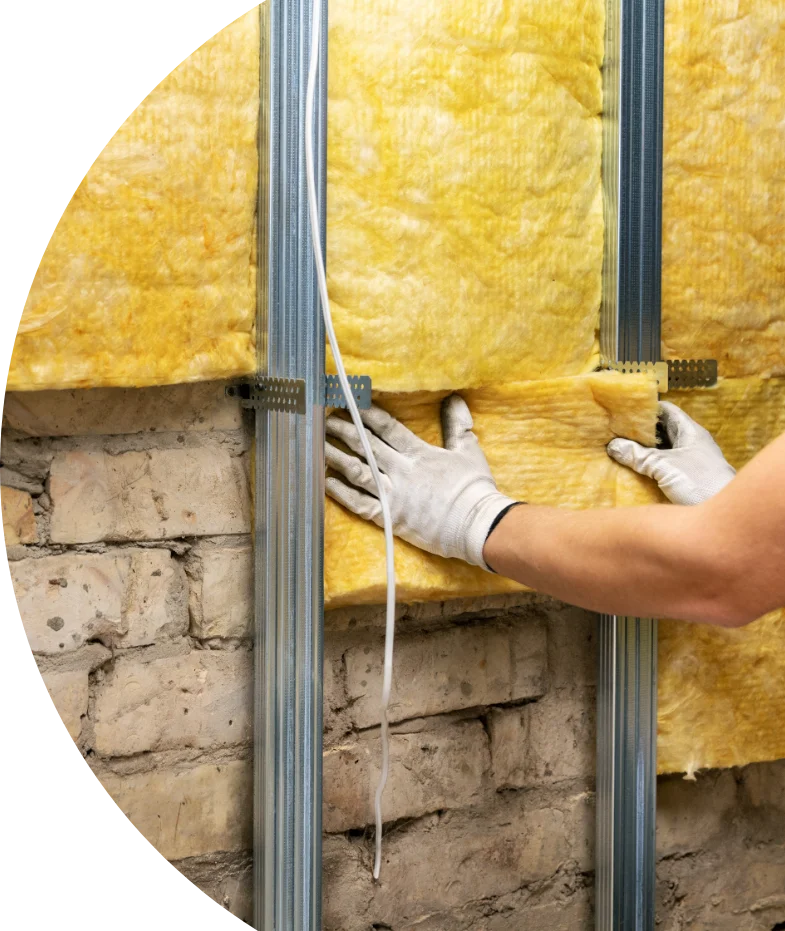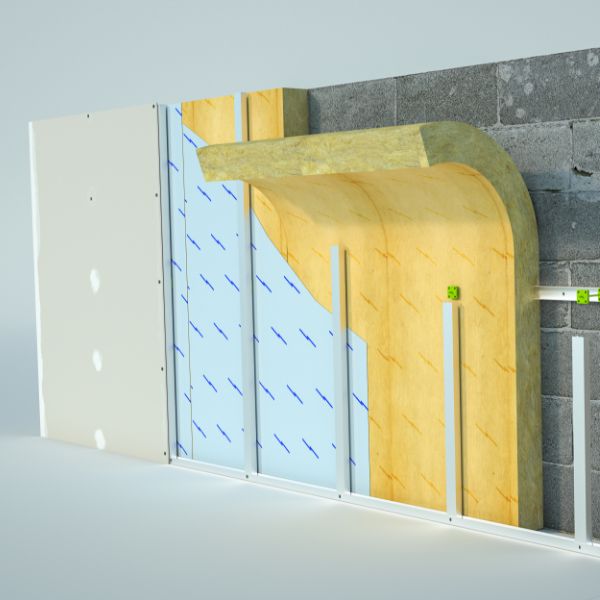Internal Wall Insulation
By evaluating your home’s specific needs, we can recommend and facilitate internal wall insulation solutions that will significantly improve your property’s thermal performance.

What is Internal Wall Insulation?
Internal wall insulation (IWI) is a method of improving the energy efficiency of a building by adding insulating material to the inner surface of external walls.
This technique helps to keep homes warmer in winter and cooler in summer by reducing the amount of heat that escapes through the walls.
Typically, IWI involves attaching insulation boards or stud walls filled with insulating material, such as mineral wool or rigid foam, to the inside of external walls. These boards are then covered with plasterboard, which can be decorated as normal.
The primary goal of internal wall insulation is to enhance thermal performance, which in turn reduces energy consumption and heating costs. This method is particularly beneficial for older properties that lack cavity walls, which cannot be insulated using the more common cavity wall insulation techniques.

Frequently Asked Questions
IWI involves adding insulating materials to the inner surfaces of external walls to improve a building’s thermal efficiency. This helps to reduce heat loss, making homes warmer in winter and cooler in summer, thus lowering energy consumption and heating costs.
Internal wall insulation works by attaching insulation boards or stud walls filled with insulating materials, such as mineral wool or rigid foam, to the inside of external walls. These are then covered with plasterboard, which can be decorated as normal. This creates a barrier that reduces heat transfer through the walls.
Properties that benefit the most from internal wall insulation are typically older buildings that lack cavity walls. These homes cannot be insulated using cavity wall insulation methods and, therefore, IWI is a suitable alternative to enhance their energy efficiency.
The benefits include significant energy savings, improved comfort with more consistent indoor temperatures, reduced carbon footprint due to lower energy consumption, and enhanced indoor air quality by preventing dampness and condensation.
Yes, IWI will require some alterations to your interior walls as insulation boards or stud walls need to be installed. However, these are covered with plasterboard, which can be decorated to match the rest of your home’s interior.
Why You Should Have Internal Wall Insulation
There are several compelling reasons to consider this measure for your home. First and foremost, it can lead to significant energy savings. By reducing heat loss, your home will require less energy to maintain a comfortable temperature, which can substantially lower your heating bills. This is especially beneficial during the colder months when heating costs typically spike.
In addition to financial savings, IWI can greatly enhance the comfort of your living space. Homes with poor insulation often suffer from cold spots and draughts, making it difficult to maintain a consistent temperature. With IWI, you can enjoy a more even distribution of heat throughout your home, eliminating cold patches and creating a more pleasant indoor environment.
Environmentally Friendly
Another important consideration is the environmental impact. Improved insulation means reduced energy consumption, which in turn leads to lower greenhouse gas emissions. By investing in IWI, you are contributing to a more sustainable future by decreasing your home’s carbon footprint.
Moreover, IWI can improve the overall air quality in your home. Proper insulation helps to prevent dampness and condensation, which can lead to mould growth and associated health issues. By maintaining a drier and healthier indoor environment, you can protect the well-being of your household.
Contact Us
We’re excited to help you achieve your energy efficiency goals. Contact MB Solutions today to learn more about our services and how we can assist you. Together, we can create a greener, more sustainable future.
